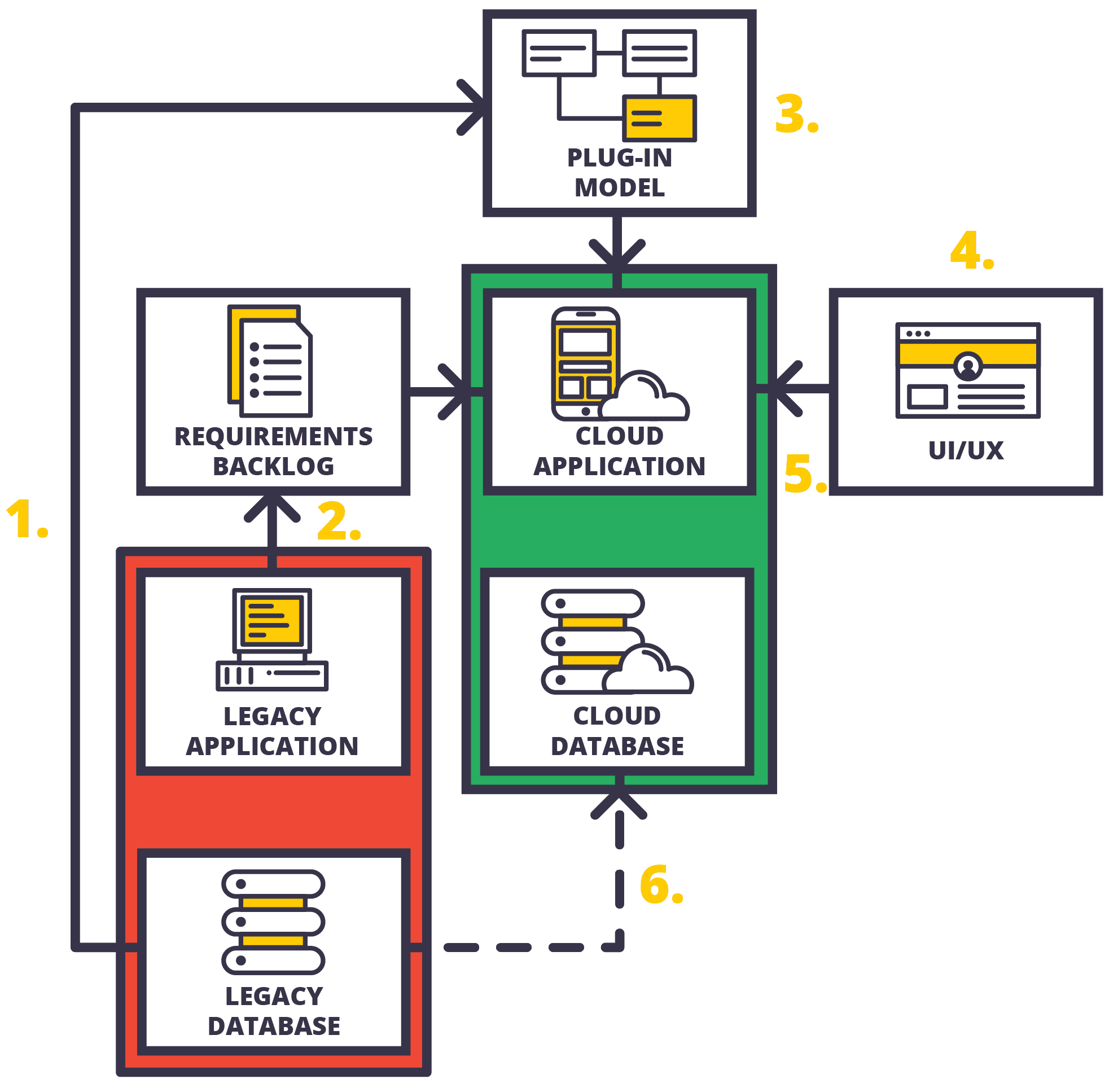Every business in the software industry has the same goal: to lead their field in innovation. Whether this means you are constantly fighting an uphill battle as a startup or running around in circles as a corporate, eventually you will reach the point where it is time to face the challenge of software migration. This is the process of moving your program or information from your older system to a new and better platform, as to minimise the need for reengineering.
During this process there are a number of challenges to overcome. In fact, a recent survey found that around 75 percent of businesses experience problems during the migration process. This means finding the most appropriate and effective method for your business to tackle software migration can lead to huge cost and time savings for your company. My hope is that once I explain to you the why and how, the process will not look so scary.
Generally speaking, there are two types of software migration to consider - data migration and application migration. Data migration is the process of transferring data between computer systems or data systems. A usual reason for this is to replace your storage system, such as an upgrade to the cloud. Application migration is the process of transferring some software onto a new technology stack. A usual reason for this is when a legacy software system is installed locally on a computer but needs to be modernised to the cloud.
Why would a startup need software migration?
Beginning a company requires a lot of tough work. Sometimes, working in iterations can feel like constantly fighting an uphill battle. With hard work however, hopefully you reach the point where you have found a product/market fit and a lighthouse client. However, the MVP you have created to prove the market at this stage is essentially your most simplistic software. Your next goal as a startup is to gain further market traction, and this means your software must be able to scale with you. This is where software migration becomes important for a startup business. The ideal solution is to migrate from an MVP to a scalable technology stack that will be cost effective but will also minimise the risks your business faces.
Why would a corporate need software migration?
Corporate companies in the software industry will likely come to the point where their software's entropy increases and becomes too difficult to effectively utilise. Perhaps the system is running too slowly or maybe you want to improve the user experience, either way the next step to stay competitive is to update your legacy system to a more efficient system. However, keeping up with the competition is tough. Like 60 percent of businesses that claim they look to update their software quarterly, it's likely you will need to repeatedly undergo this legacy migration process, costing your business time and money. The key here is to discover a systematic process that will stop your business from running in circles and break the cycle of legacy systems.
The software migration solution
The road to successful software migration may seem difficult and lined with potential hazards, but at WorkingMouse we have developed a 6 step process that systematically minimises the risks involved.
- We ensure you will have a systematic path of data at the end of the process. At WorkingMouse this is completed as an automated step that reverse engineers from the legacy database to the plugin model.
- The next step involves using a business analyst to create the requirements backlog which can then be used to describe the behaviour of the application.
- Then we can determine which capabilities of our plug-in model you want to switch on to match the application through analysing the previous step.
- From here we create a new user-interface that is responsive and mobile.
- Bots then generate most of the new cloud application! This process is followed by assigning developers to augment the target to meet all of the requirements.
- The sixth and final step is the migration step! This is where you migrate customers from the legacy application to the new cloud application. Thanks to step 1, this process gets to be fully automated (with the exceptions of overly complex scenarios of course).
Once you move to the cloud your technology becomes scalable, providing your business an opportunity for growth and innovation.
Whether you are a startup or a corporate you need to ensure your technology remains competitive by having it on the most efficient and user-friendly platform. Choosing the right software migration process is therefore a key decision in the battle to maintain a high level of innovation as a business.
That choice might seem daunting, so we suggest heading to our Legacy Modernisation Resource Hub first.






